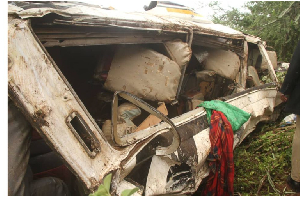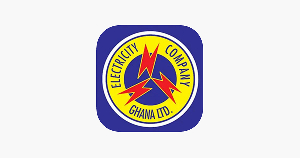A GNA feature by Laudia Nunoo
Ashaiman, Nov.5, GNA - On the morning of Tuesday June 3 2008 a number of radio stations in Accra shifted their focus from the usual newspaper reviews to comment on a clash between commercial drivers and the Police at Ashaiman, near Tema.
While some callers said Ashaiman was filled with troublemakers, others criticised the decision of President John Agyekum Kufour to give Ashaiman a municipal status as the incident happened barely two months after it was made a municipality.
The youth of Ashaiman had staged a demonstration in November 2007 to back their demand for Ashaiman to be made a municipality. Their worry was that the Tema Metropolitan Assembly (TMA), which was the administered Tema, Ashaiman and Adenta, had neglected the community. A five-member Committee of Enquiry chaired by Mr Justice C. J. Honyenuga an Appeals Court Judge, which investigated the incident, made a number of recommendations including the dismissal of the Ashaiman Divisional Commander of the Motor Traffic and Transport Unit of the Police Service (MTTU), ASP Timothy Dassah in addition to the paying of monetary compensation to the families of Moses Kassim and Moses Ofori, the two who lost their lives during the incident. Due to the incident and other perceived factors, the mere mention of Ashaiman sends shivers through the spine of some people, especially those who are yet to visit the town. But why do people have the phobia for Ashaiman? Why fear the community that has come to be popularly known as the United States of Ashaiman? Nii Ashai founded the town in the 17th century after he moved from Tema.
He named it Ashaiman meaning Ashai's town. His two brothers, Nii Amu and Nii Oko, settled in adjoining towns now called Mantseman and Moniomanye, respectively. Nii Tetteh Amui II is now the head of Ashaiman. Ashaiman grew as other migrants from the Dangme West District, precisely the Ada area, came to settle in the town and were followed subsequently by other ethnic groups including the Ewes and Northerners. As Ashaiman expanded, communities such as Lebanon, Middle East, Jericho and Bethlehem that derived their names because soldiers, who returned from peacekeeping duties in these countries, settled there, and Zongo Laka sprang up.
Currently about 50 different ethnic groups from all the 10 regions of Ghana and other African countries reside in Ashaiman, each with its ethnic chief.
Ashaiman is located about four kilometres to the north of Tema and about 30 kilometres from Accra, the capital of Ghana and shares boundaries on the north and east with the Katamanso Zonal Council of the TMA, on the south with the Tema Township, and on the west with Adjei Kojo, a community which forms part of Tema Zonal Council. The Ghana Year 2000 Population Census Report estimated the population of Ashaiman to be 150,312 with a growth rate of 4.6 per cent, which is higher than the 2.6 per cent national growth rate. The Ashaiman Municipal Assembly (ASHMA) estimated the current population of the Municipality to be 217,717 with an average household size of five. The Census Report further estimated that 75,183 of the population are males while 75,129 are females with the majority of the population falling within the ages of 15 years and 34 years. The main occupations in Ashaiman are farming, especially crop farming, livestock and poultry raising as well as fishing; manufacturing; food processing; quarrying and construction; commerce and kente weaving. Ashaiman has 17 public basic schools and 286 private basic schools consisting of nursery, primary and Junior High Schools. Ashaiman Senior High School (SHS) is the only public second cycle school. There are seven private SHS.
Ashaiman has only one public health centre, 14 private clinics and one private maternity home.
According to the Tema Human Development Report of 2004, apart from the insufficient health facilities, most of the existing ones did not have adequate qualified health personnel and also operated under poor hygienic conditions.
Malaria, acute respiratory infections, skin diseases, diarrhoea, chickenpox, hypertension, acute ear infection, eye infection, typhoid as well as home and occupational accidents were named by the Tema Metropolitan Health Directorate as the top 10 medical conditions reported in Ashaiman.
Some residents depend on the services of traditional healers. Ashaiman has a Traditional Healers Association with over 100 members, who treat various kinds of diseases such as stroke, hypertension, diabetes, asthma, infertility, sexual weakness, waist pains, hernia and piles, among other ailments.
These traditional healers sometimes worsen the health problems of the people. Some of their herbal preparations sometimes worsen the medical condition of their clients.
Ashaiman's proximity to Tema and Accra makes it easy for community members to have access to higher-level social facilities and infrastructure such as good roads with drainage, water and electricity. Even though the town has well engineered drains along its major roads, drainage within the residential units is very poor. Areas within these units have, therefore, been mired with liquid waste, compounding the already existing problem of sanitation.
Disposing of liquid waste is one of the major problems facing the Ashaiman Municipality. While most of the residential areas do not have good drainage facilities, the few existing ones have been choked with solid waste causing wastewater to stagnate, giving offensive odour in the communities.
Most households in Ashaiman do not have domestic toilet facilities in their houses. Landlords fail to add toilet facilities to their residential units and thus putting pressure on the limited public toilet facilities. This has led to the indiscriminate defecation in nearby open spaces and bushes in the area.
A trend which is also gradually evolving in the Municipality is that, some people defecate into black polythene bags and later dispose of them by either dumping them in their refuse containers, gutters or throwing them out without regard to wherever they might land. Another sanitation problem facing Ashaiman is the indiscriminate disposal of refuse even though the town benefits from an organized system of refuse collection by the Tema Metropolitan Assembly in addition to a number of refuse dumping sites in the Municipality. The sanitation problem has been compounded by the fact that most residents prefer littering the town to paying for the disposal of the refuse they generate.
The most worrying aspect of the situation is that apart from warding off possible investors, it could trigger the outbreak of communicable diseases like cholera, typhoid and malaria. Accessing potable water is not a problem at Ashaiman as the area is served with a network of water connections from the Kpong Water Works. There are 15 fire hydrants.
The Ashaiman District Police recorded 5,531 between January and September 2007. The reported cases included assault; stealing; threat of death; fraud and possession of narcotics drugs. Even though the 1,794 cases reported in the first quarter of 2008 were less than those for the same period in 2007, there was a sharp increase to 2,324 in the second quarter of 2008.
Other crimes reported were robbery; murder; defilement; causing damage; offensive conduct; rape and unlawful entry.
Mr Albert Boakye Okyere Municipal Chief Executive of Ashaiman, and, Mr Alfred Agbesi, Member of Parliament for Ashaiman told GNA that Ashaiman was not a town of criminals as people perceived. Happily, the Ashaiman Municipal Assembly recently held its first stakeholders forum. The Chief Executive announced that the Assembly's vision was to turn the town into a "24-hour-city". The Assembly is building a treatment and recycling plant to address its sanitation problems in addition to constructing new roads and drains and the tarring of existing roads. 5 Nov. 08
Opinions of Saturday, 8 November 2008
Columnist: GNA














